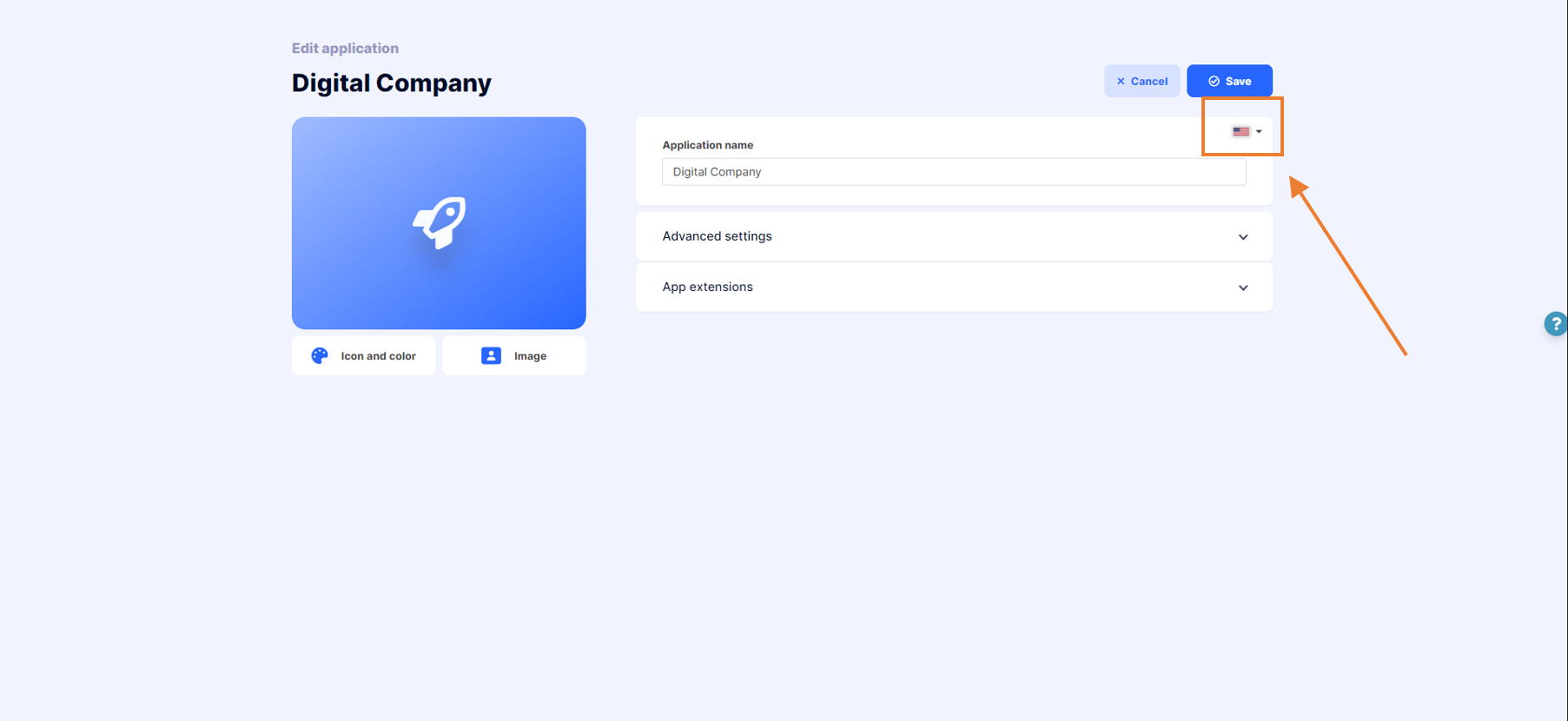Multilingual Applications
Why They Are Useful
Multilingual applications in Tabidoo allow you to run a single application in multiple languages simultaneously. This is ideal for:
- International teams – each member can work in their preferred language while sharing the same data.
- Localized projects – table names, field labels, and controls can be displayed in different languages.
- Easier adoption – users don’t have to switch between the app’s language and their everyday work environment.
Even though the data itself may be in a single common language (e.g., English), the user interface, table names, and labels can be localized for each team.
How to do it?
- Create an application in the first language. This language should be English.
- In the advanced settings, check the Multilingual application check box.
- A menu for language selection will appear in the upper-right corner next to the application name.
- Select the language of the first application and save it.
- Click on the language drop-down menu and choose the next language in which you want to create the application.
- Fill in the name and save it. Follow the same steps for all languages.
- You need to repeat the same process when you are filling in the names of columns (records) in each multilingual table. The language switching menu can be found in the top-right part of the screen. For each record, fill in the field name in all selected languages.
The same procedure applies when creating multilingual tables – every field name must be defined in all chosen languages.
Important Notes
Consistency is key – always fill in the names for all languages. If any translation is missing, the app may behave incorrectly, and debugging becomes difficult.
Internal names remain English – even if multilingual support is turned off, technical (internal) names of tables and fields are always generated in English.
Fallback to English – if a translation is missing, the system will automatically use the English label.
Scripting – when writing scripts, you always work with the internal (English) names regardless of the application’s current language setting.
Practical Tips
It’s recommended to always start with the English version and then add translations for other languages.
For larger projects, prepare a checklist to make sure all labels and fields are translated into every selected language.
Use consistent terminology across all languages – this helps both end users and future application maintenance.
Summary
Multilingual applications are a powerful tool that allows you to localize Tabidoo into multiple languages and collaborate effectively in international teams. However, you must strictly follow the rule of always filling in translations everywhere; otherwise, you risk incorrect behavior and maintenance issues. With properly set multilingual support, you get a clear, flexible, and user-friendly application.

